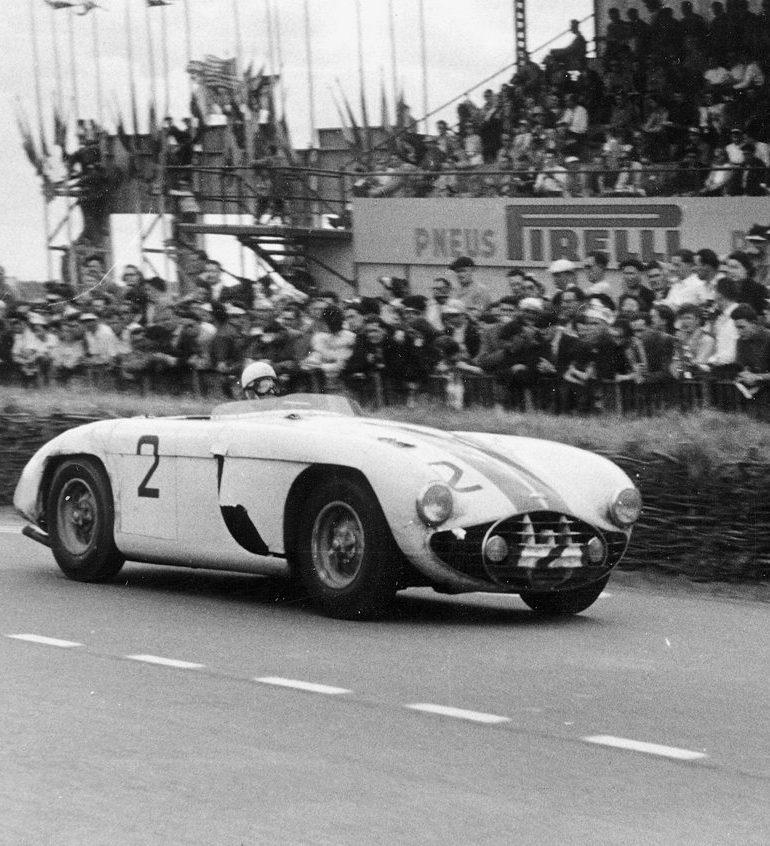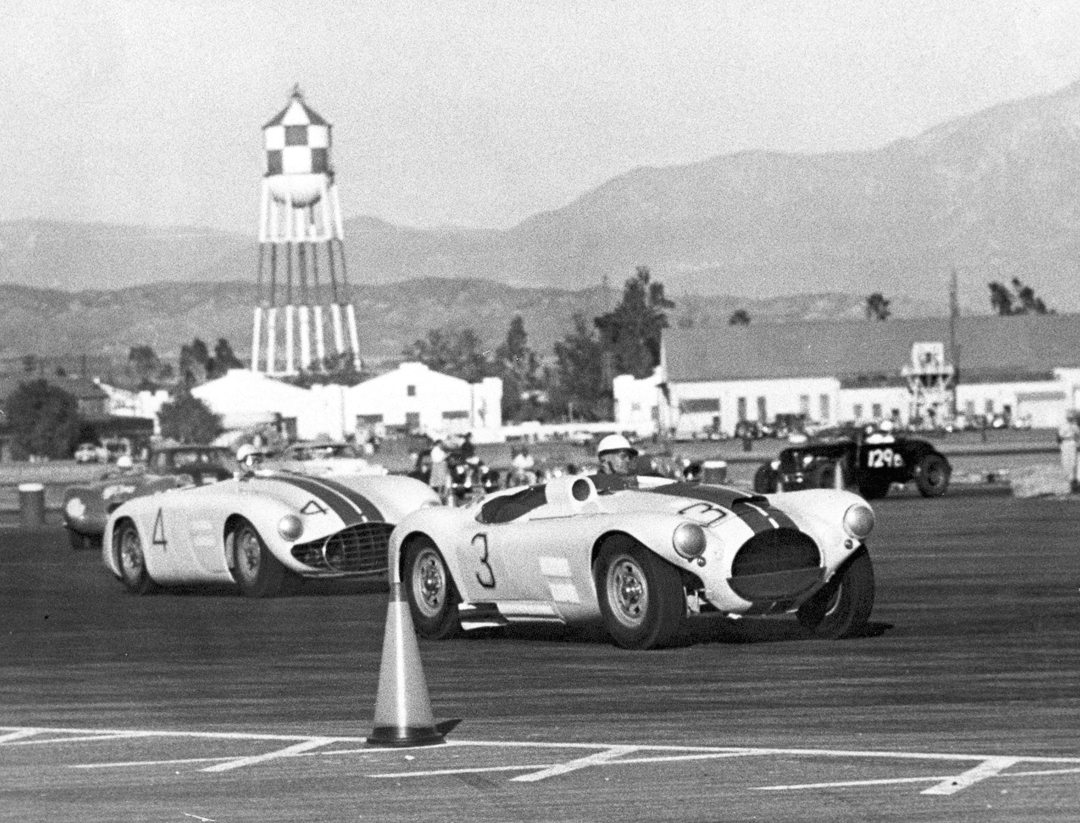Briggs Cunningham was one of the most important figures in U.S. road racing during the era of the 1950s. He raced automobiles and yachts, manufactured sports cars, established a significant auto museum and distributed Jaguars. His overriding goal was to win Le Mans with an all-American car driven by Americans. According to Sam Posey, “He embodied the spirit of the true gentleman racer. His legacy at Le Mans was huge.” Featured on the cover of the April 26, 1954 edition of Time magazine, the caption reads, “Road Racer Briggs Cunningham: Horsepower, Endurance, Sportsmanship.”
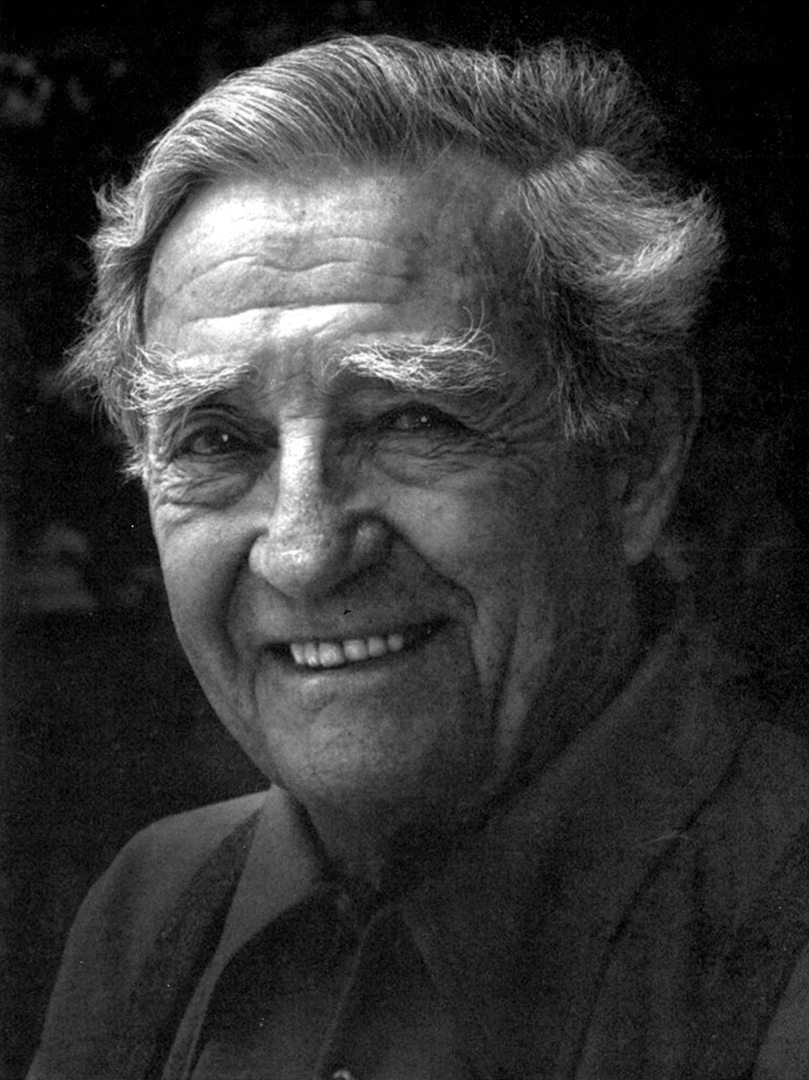
Briggs Swift Cunningham was born on January 19, 1907 in Cincinnati, Ohio. His father had made his fortune by investing in railways, commercial real estate and a meatpacking plant. He was the chief financier for two young men—William Proctor and James Gamble—who developed a soap that floated. Brigg’s mother was wealthy in her own right, having inherited railroad and utilities holdings. They left a considerable fortune to Briggs and his sister.
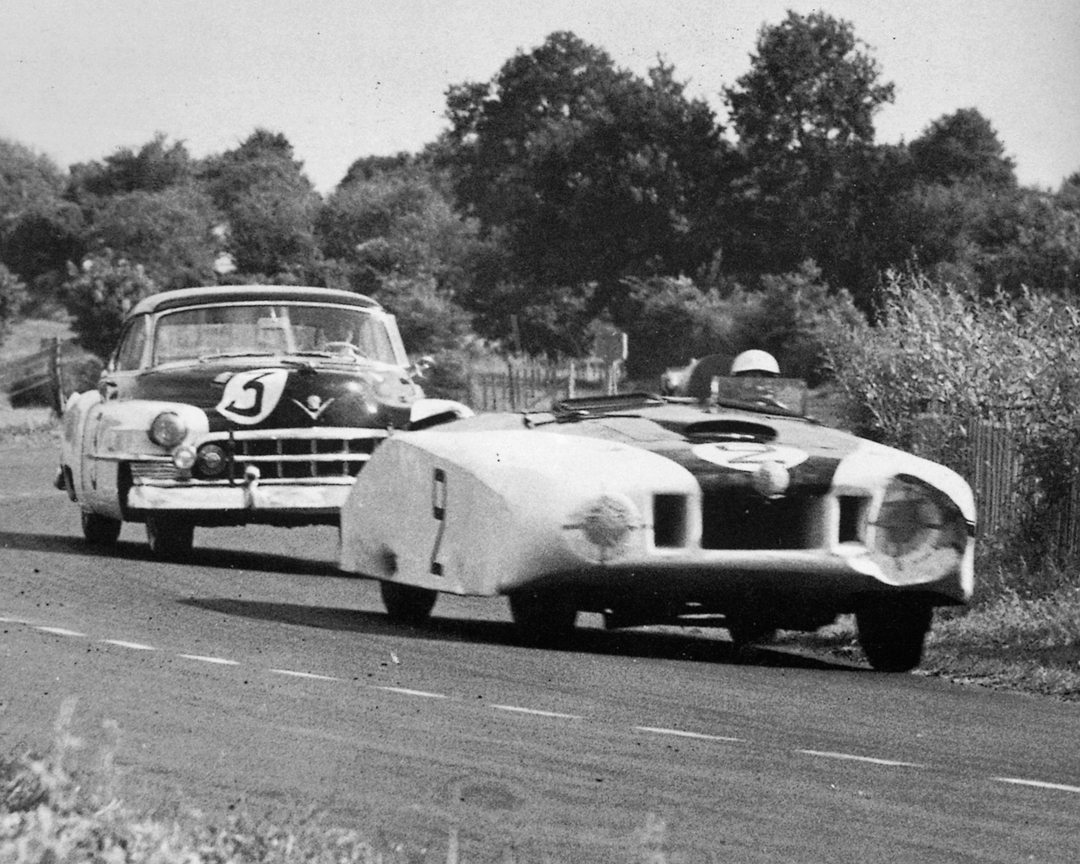
As a youth, Briggs went street racing with his uncle in a Dodge touring car fitted with a Hispano-Suiza airplane engine. Cunningham said, “I guess you could say that my uncle influenced me toward automobiles and racing.” When he was only six years old, he learned how to sail. Eight-year-old Cunningham persuaded the family chauffeur to teach him how to drive in his father’s car, a Pierce-Arrow. He bought his first car, a Dodge, when he was 16. While going to college prep school, he had a 1923 Wills Sainte Claire (a high-quality car with a V8 overhead-cam engine made between 1921 and 1927). When he was 17, the family moved to Southport, Connecticut, where he joined the Pequot Yacht Club and raced a Star Class sailboat.
In 1927, he went to Yale to study engineering. During a Christmas vacation he acquired the prototype Packard Phaeton while visiting the Packard proving grounds. He quit Yale after the 1929 spring semester, spending that summer sailing on Long Island Sound. There he met and married another sailing enthusiast, Lucie Bedford. She was the daughter of Standard Oil heir Fred Bedford. They honeymooned in Europe, driving around in an Alfa Romeo 6C and a Mercedes-Benz SSK. While there, they attended a number of automobile races.
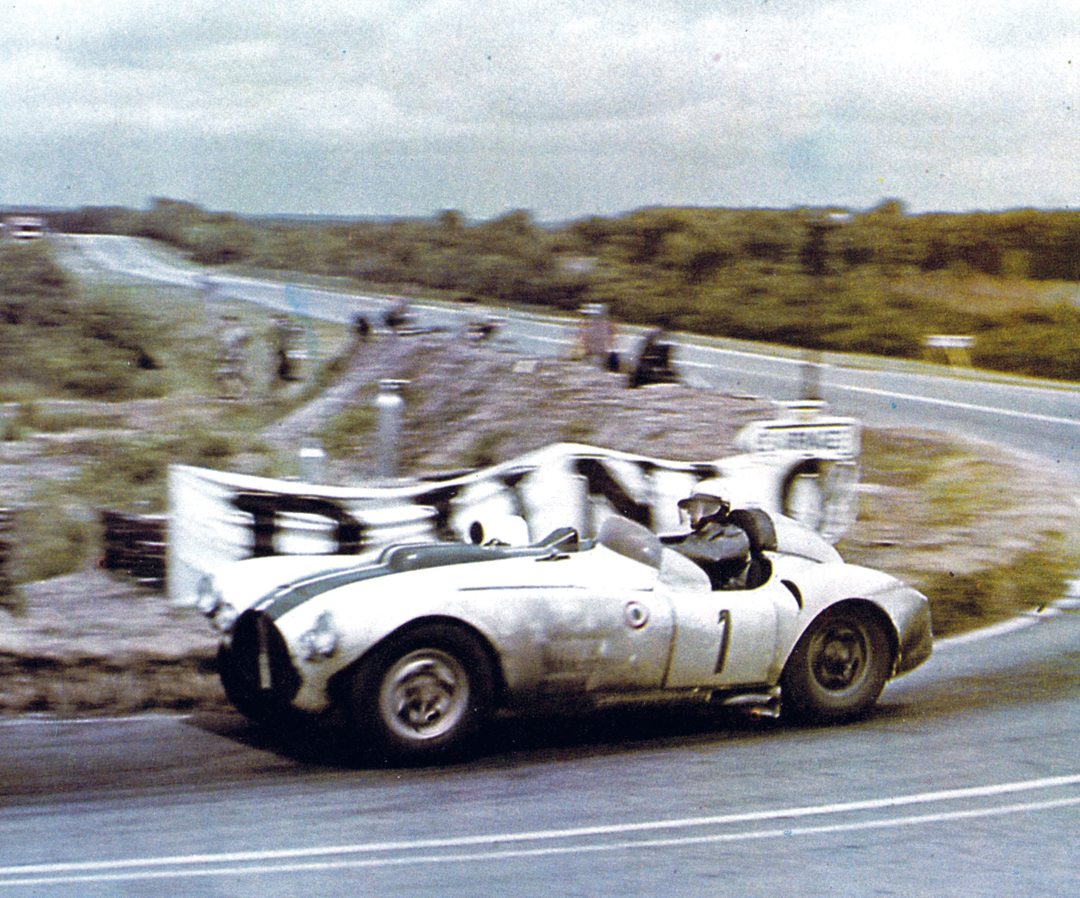
The pair returned home to live in Connecticut where Briggs became part owner of a seaplane base. He learned how to fly, played golf and sailed. Lucie bought the new family’s first automobile, a Pierce-Arrow.
In 1931, Briggs bought a 19½-foot sloop built to the International Six Metre Rule. He named it the “Lucie,” after his wife. In 1934, ’35 and ’36, Lucie was on the British Americas Cup teams. Cunningham won the Prince Edward VII Cup, the Bermuda Gold Cup and the Scandinavian Gold Cup.
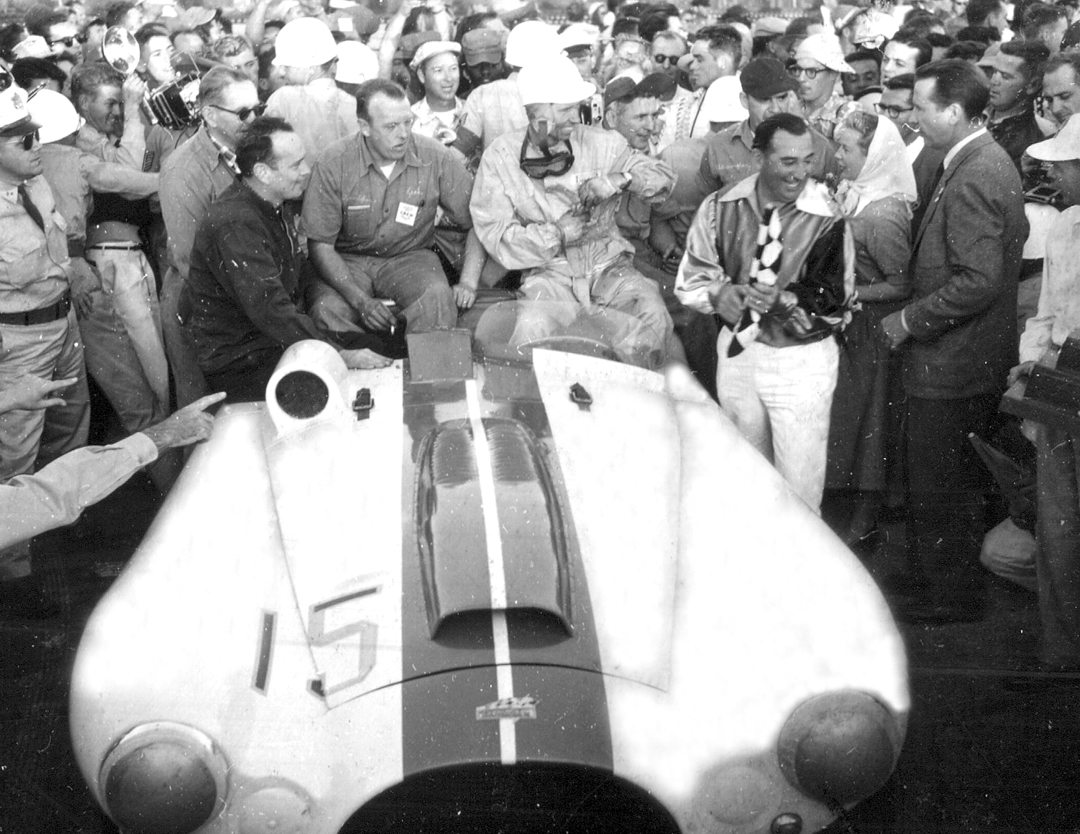
During the early ’30s, Cunningham, along with two college friends—Miles and Sam Collier—started racing their cars over private roads on the Collier estate, Overleaf, in Westchester County, New York. Both Miles and Sam had raced in Europe. Sam remembered that, “Briggs and I had many discussions about racing in Europe and importing European-style racing to this country.” One time, Briggs wrote Miles, “Why can’t we race in America like they do over in Europe?” As a consequence, the three founded the Automobile Racing Club of America in 1933. Through 1941, the ARCA staged 29 races for its 135 members on both public and private roads. With a few exceptions, these were rather minor events that didn’t attract much, if any, public or press attention.
ARCA’s last race was on the grounds of the 1940 New York World’s Fair. Briggs entered the first car he had built—called the Bu-Merc—a Mercedes SSK body on a Buick Century chassis and running gear. (It was called the “Century” because its powerful engine would take the car to 100 mph.) Miles Collier drove it for him and was leading the race when the car struck a lamppost due to fading brakes.
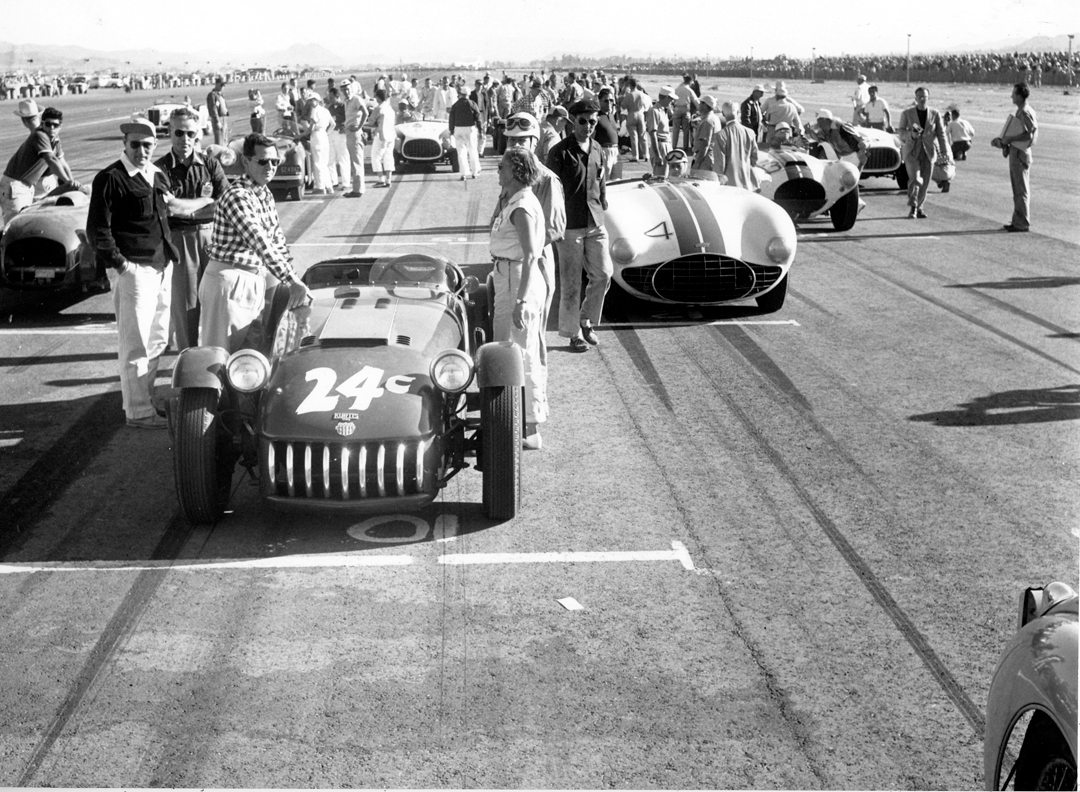
When WWII came along, the ARCA was dissolved and Briggs joined the Civil Air Patrol. Piloting his single-engine Sikorsky, he flew missions along the East Coast looking for German submarines. Interestingly enough, John Fitch was doing the same thing in his sailboat. Later, John drove for and became a close friend of Briggs.
In early 1944, a group of dedicated car enthusiasts formed the Sports Car Club of America. Those first members were not interested in racing, but rather the collection and preservation of sports cars. By 1947, the club had added a number of new members, including Cunningham and the Collier brothers. The club experienced an upheaval when those who wanted to road race managed to take over. The first road race took place on October 2, 1948, in and around the small upstate New York village of Watkins Glen. The six-mile course ran over paved, gravel and dirt roads. The first event—a four-lap qualifier—was won by Frank Griswold in an Alfa Romeo, followed by Cunningham in his Bu-Merc.
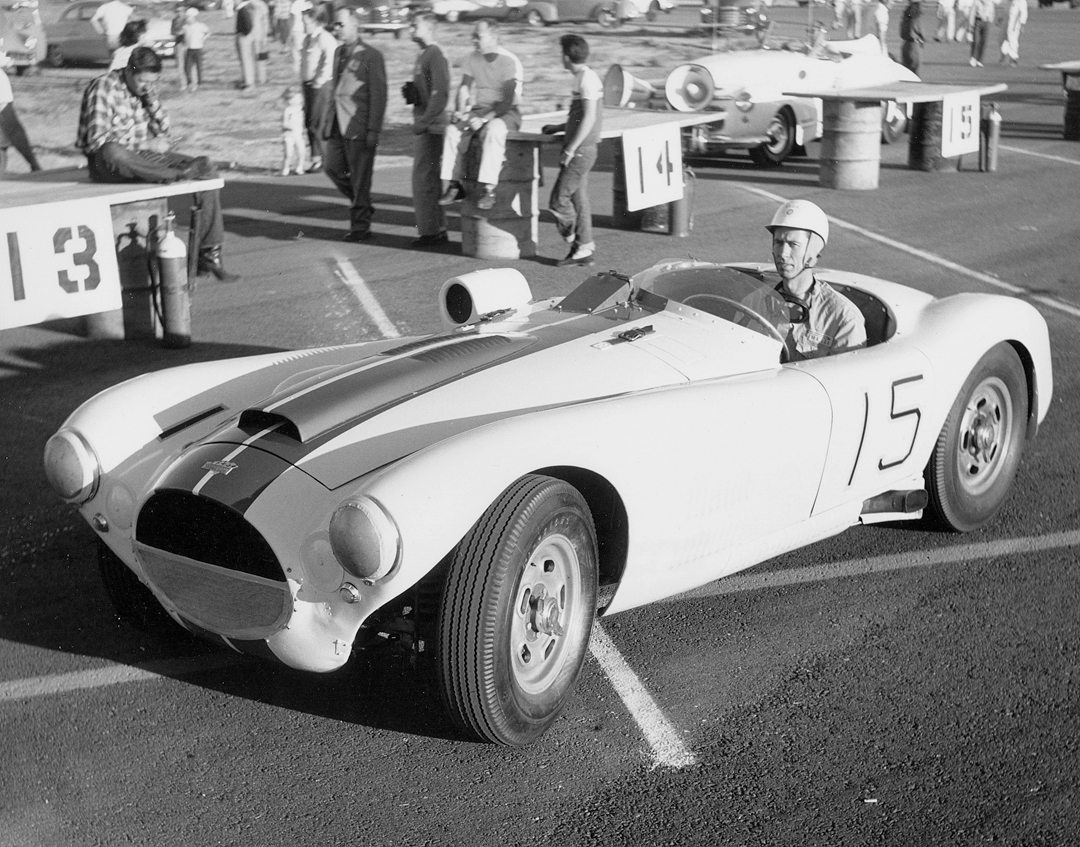
The SCCA held a second race over the same course the following year, when Briggs led most of the main event in his Ferrari 166 Corsa, the first Ferrari raced in the U.S. Toward the end, however, Miles Collier managed to squeeze by and win in his Riley-Ford. In September 1950, tragedy struck. Sam Collier was killed when he rolled Briggs’ Ferrari. Another car left the road, killing a fireman and two spectators. Cunningham finished 2nd in that race in his Healey-Cadillac.
During the ’50s, the premier road race in the world was the 24 Hours of Le Mans. Briggs wanted to win with an American car driven by an American. He had become acquainted with Bill Frick and Ted Tappett (Phil Walters’ pseudonym). The two had a shop on Long Island that modified production cars. Among their creations were cars called Fordillacs, Fords with Cadillac engines. The lightweight bodies with more powerful engines produced vastly improved performance.
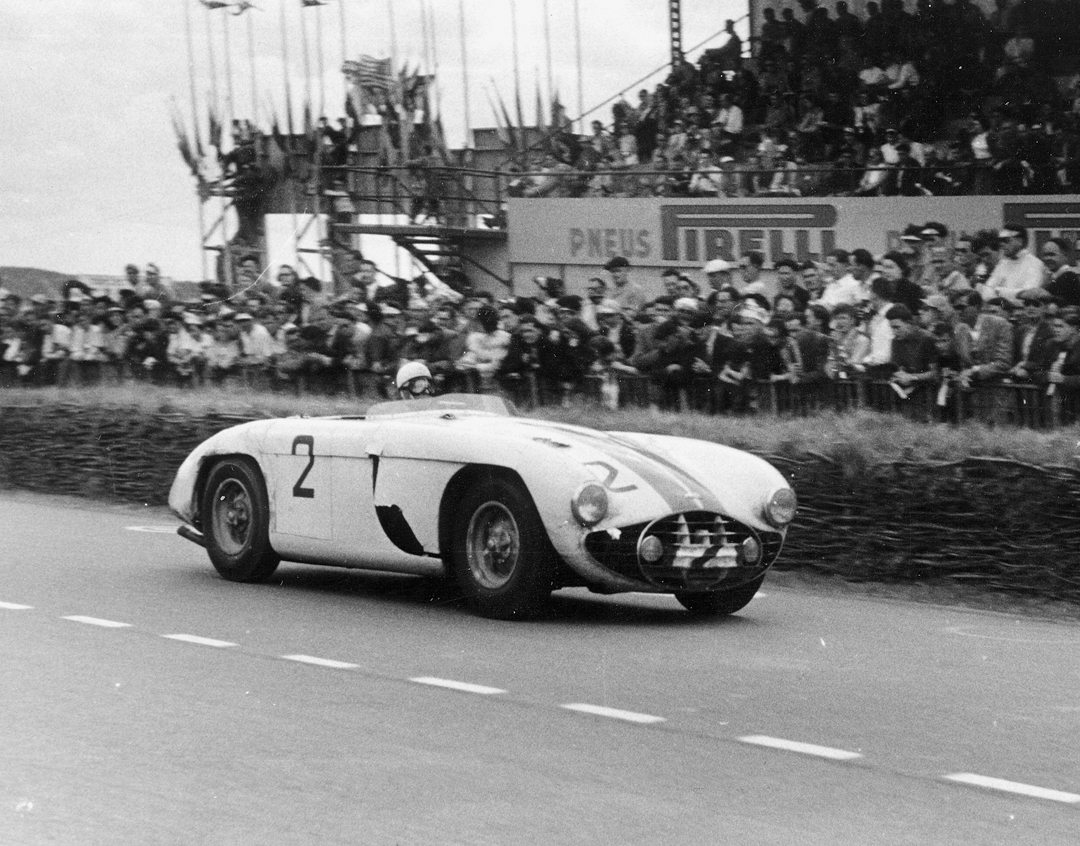
Briggs bought a Fordillac to enter the 1950 running of Le Mans, but the Automobile Club de l’Oest rejected the entry because it was not recognized as a production car. So in the alternative, Cunningham entered two Cadillacs. One was a stock Series 62 Coupe de Ville with twin carburetors and a highly tuned engine. Called the “Clumsy Puppy”, it was driven by Sam and Miles Collier. The second Cadillac had a five-carburetor manifold and an aerodynamic aluminum body designed and built after hours by a group of Grumman Aircraft engineers. Visually unattractive, it was dubbed Le Monstre by the French. Fans were amused because the huge engine caused the earth to shake, and the exhaust spewed flames visible at night. Briggs and Phil Walters drove it to 11th overall with Sam and Miles just ahead in 10th.
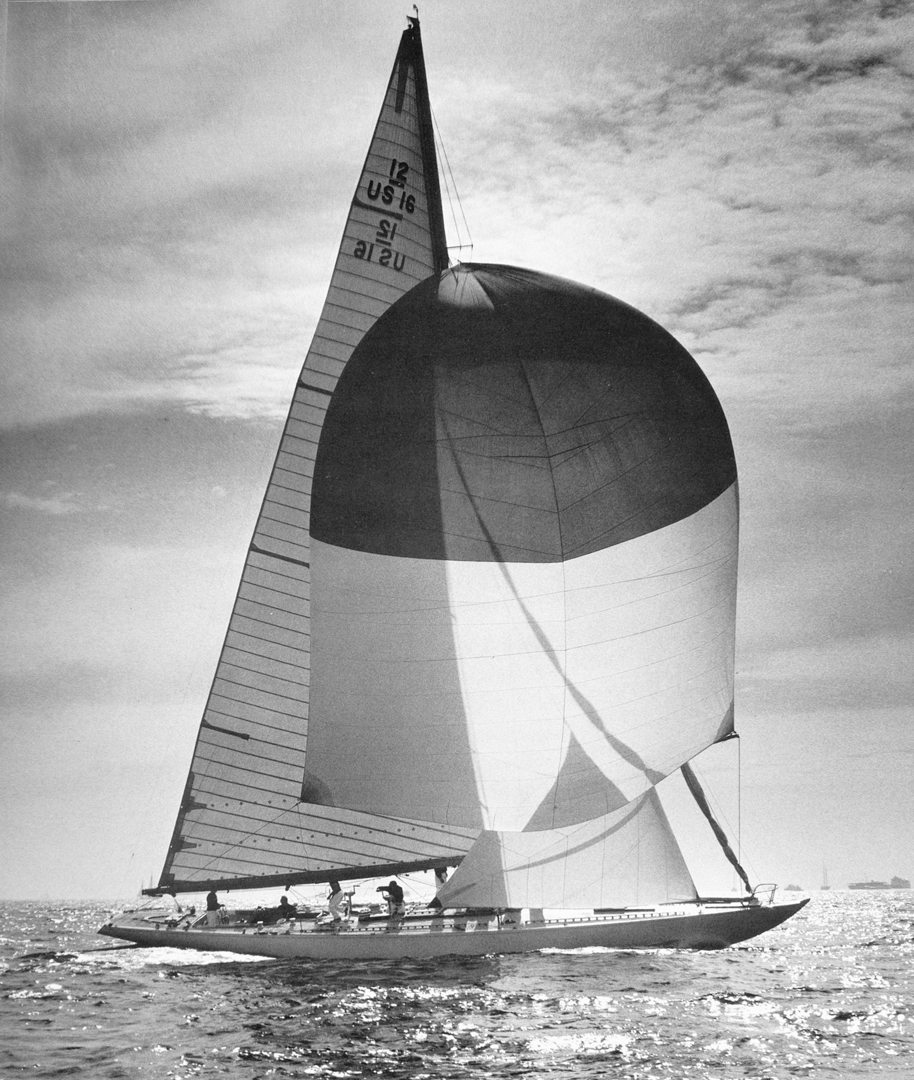
Buoyed by the relative success of his first assault on Le Mans, Cunningham decided to build his own cars. To that end, he bought Frick-Tappett Motors, moved it lock-stock-and-barrel to West Palm Beach, Florida, and formed the B.S. Cunningham Company. Briggs hired Phil Walters as his general manager.
The new company was established in September 1950. Its first effort, a prototype called the C-1, was largely engineered by Bill Frick. Powered by a Cadillac engine, the car was used in competition only once. Piloted by John Fitch, it placed 2nd in the October 1951 Mount Equinox Hillclimb.
The original intent was to build sports cars with Cadillac engines. Work started on the C-2R (R meaning race version) to make a car competitive at Le Mans. When the supply of Cadillac engines and help from GM evaporated, Briggs turned to his Yale classmate, Bob Keller who was the son of Chrysler President K.T. Keller. The company had just introduced the Firepower V8 engine with its hemispherical combustion chambers, which Chrysler sold to Cunningham at a 40-percent discount. Chassis details of the C-1 and the C-2R were the same. Modifications to the Chrysler Hemis raised the output from 180 to 270 brake horsepower.
Three C-2Rs, along with six drivers and crew, went to France for the June 23 race in 1951. The car driven by Briggs and George Huntoon had steering problems, while the George Rand and Fred Wacker car’s gearbox failed, so both failed to finish. The third car with Fitch and Walters covered itself with glory having climbed to 2nd overall during the night and in the rain. After the sun rose, however, it gradually dropped back to finish 18th overall.
From France, the team went to Wisconsin for the August 26 Elkhart Lake Road Races. There Fitch won overall with the second car finishing 6th while the third entry did not finish. In September at Watkins Glen, Briggs took 3rd overall in his 166 Ferrari, just behind Fitch in a C-2R.
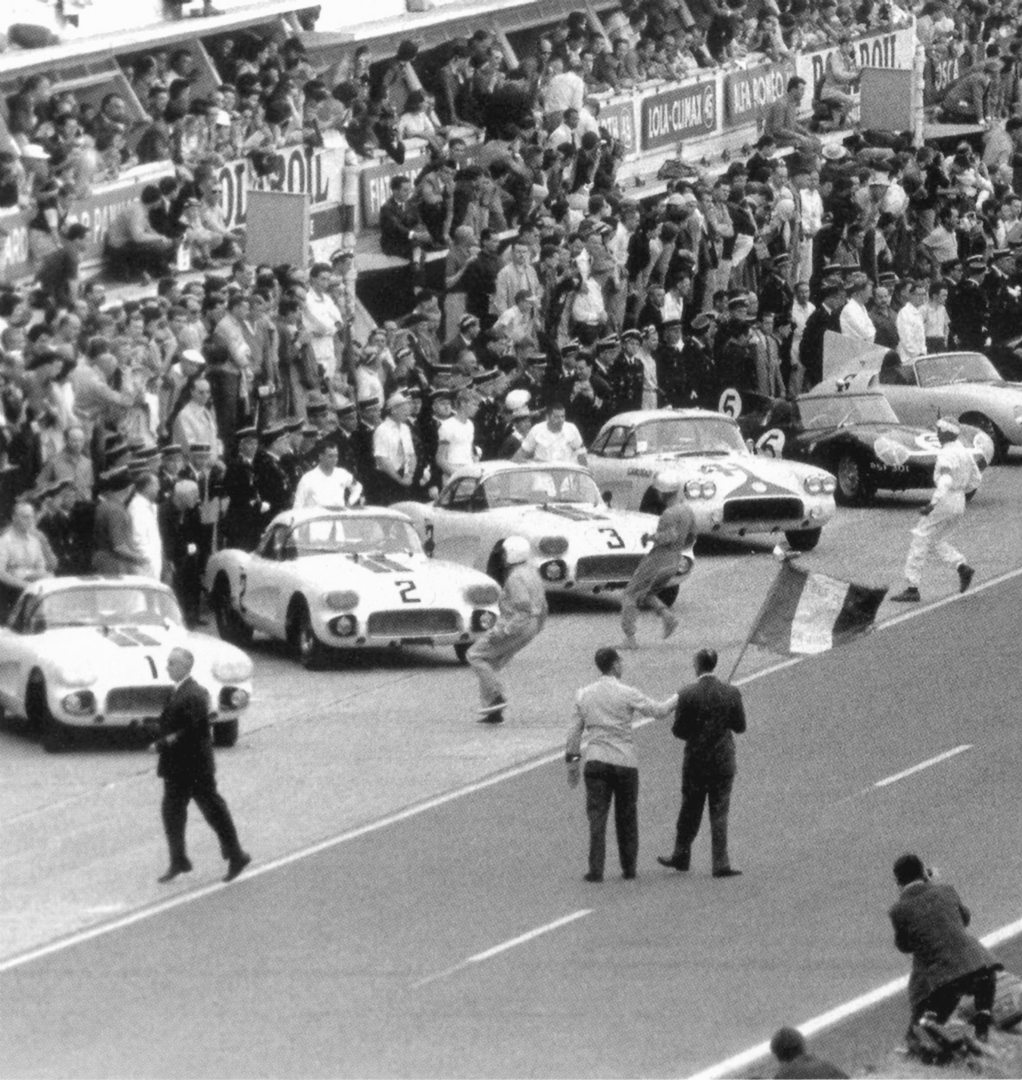
It would take a long book to describe all of the 813 races where Briggs was a driver and/or an entrant. The statistics are astounding. A total of 35 different drivers were entered by Cunningham in one car or another. Those who posted wins driving for Briggs included Fitch, Walters, Sherwood Johnston, Stirling Moss, Walt Hansgen, Denise McCluggage, Ed Crawford, Bruce McLaren and Mr. Sebring himself, Alec Ullman. Others who drove for him were Dan Gurney, Jack Brabham and Roger Penske. They racked up a total of 167 overall or class wins. Briggs won 11 of them himself.
Cunningham cars racked up a total of 32 podium finishes with 14 1sts, eight 2nds and 10 3rds. The last time a Cunningham raced was at Bridgehampton on June 1, 1958, where Charles Moran was a DNF in a C-4R. A complete record can be found at Larry Berman’s website: www.briggscunningham.com.
Some of Briggs’ other accomplishments are also memorable. Briggs won the May 1951 Giants Despair Hillclimb in his Aston Martin. Fitch won both Elkhart Lake in 1952 and Sebring in 1953 in a C-4R, and while it wasn’t a win, also finished 3rd at Le Mans that year. It was the closest Cunningham came to realizing his dream of winning Le Mans with an American car and driver. At the end of 1953, John Fitch won the National at March Air Force Base in a C-4R, clinching the SCCA National Championship.
In addition to Cunningham cars, Briggs raced and/or entered MGs, Ferraris, Jaguars, Cadillacs, Coopers, Mercedes, Chryslers, Siatas, Porsches, Oscas, a Stanguellini, Maseratis, Austin-Healeys, Listers, Lotuses, a Ford Galaxie and a 1912 Mercer Raceabout
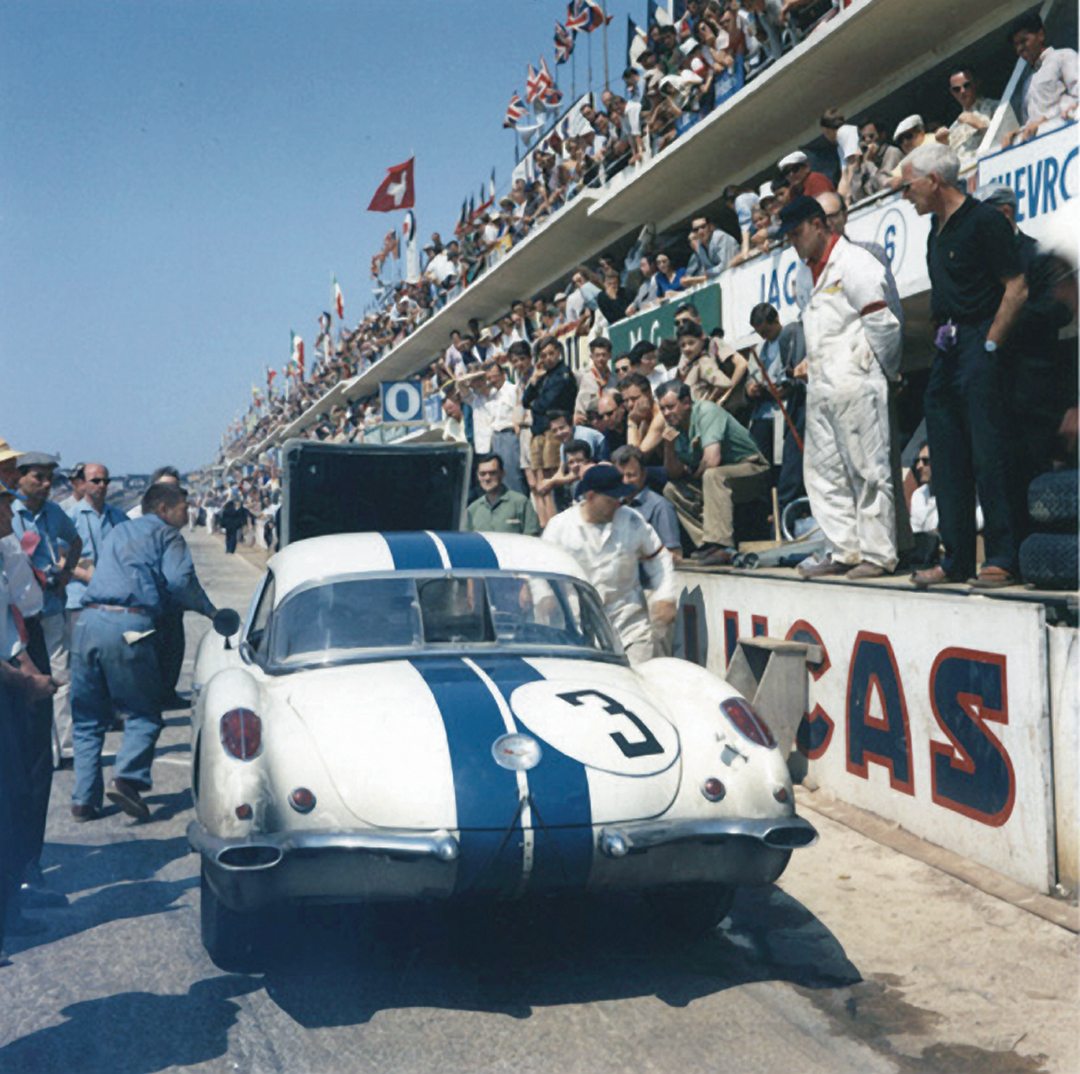
In 1953, Fitch and Walters won Sebring in a C-4R, and the next year Stirling Moss and Bill Lloyd won overall at Sebring driving Briggs’ Osca MT4 when the leading Lancia dropped out in the final hour. After retiring his Cunninghams from competition, Briggs, a Jaguar distributor, took up campaigning
D-Types. Various drivers in D-Types scored 33 victories between 1954 and 1958, including completing Briggs’ Sebring “hat trick” with victory in 1955 driven by Mike Hawthorn and Phil Walters.
After that came Lister-Jaguars. Walt Hansgen won six SCCA Nationals in a Cunningham Lister-Jaguar and several other drivers scored a number of wins. Briggs drove his last race in the 12 Hours of Sebring in 1966. It was an appropriate venue for a swan song as cars he entered there had taken five victories. Briggs himself raced there eight times.
Briggs’ co-drivers in 1966 were John Fitch and Davey Jordan. It was also the last race for Fitch. Davey recounted his remembrances: “I met Briggs at Sebring in 1965 when Scooter Patrick and I drove a Porsche 904 to 10th overall and 3rd in class. Cunningham and John Fitch were there then, also in a 904. (They finished 20th overall and 5th in class.) Early in 1966, Briggs sent me a hand-written letter inviting me to co-drive with him and Fitch in his Porsche. He asked me to qualify and I did so, setting a new lap record for our class. When the race started, Briggs took the first turn, with me next and then Fitch. Briggs had me take over again, but, unfortunately, a valve spring broke, the engine failed, so we were a DNF. I must say that Briggs had a great smile and personality. He was one of the nicest people you would ever meet and the most considerate car owner I ever drove for.”
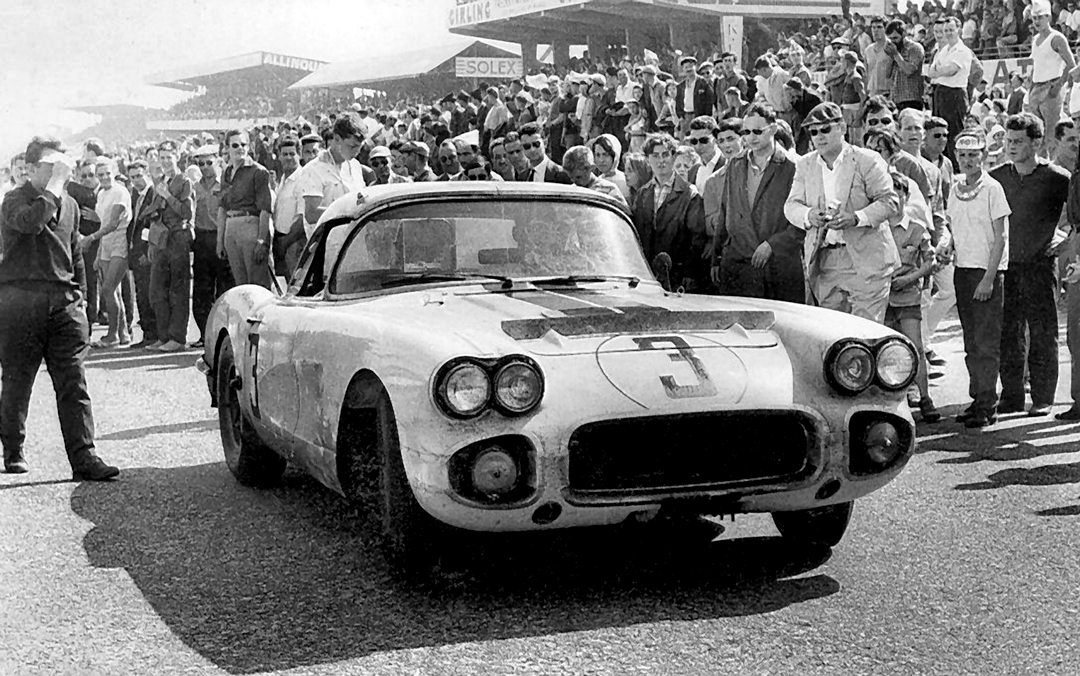
Briggs’ racing is only part of the story. The B.S. Cunningham Company not only built racecars but also roadcars. All the Cunningham cars were designated by a “C” followed by the model number. An “R” followed the number on cars prepared for racing. The prototype C-1 was followed by the C-2. Three C-2s were made as roadcars and sold by International Motors in Los Angeles. A coupe version of the C-2 was made and dubbed the
C-3. Next came a more elegant coupe, the C-3 Continental, designed by Michelotti and built by Vignale in Italy. The New York Museum of Modern Art’s Arthur Drexler called it, “One of the world’s ten best designs.” In 1963, the C-3 Continental convertible version was unveiled at the Geneva Salon.
The C-4R was the most successful Cunningham racecar. In addition, one was a coupe—the C-4RK—that raced at Le Mans in 1952 and 1953. The C-5R was introduced at Le Mans in 1953. The C-5Rs with drum brakes were outclassed by C-Type Jaguars with discs. Briggs’ last sports-racing car was the C-6R, driven by Cunningham himself at Le Mans in 1955. Initially, the C-6R had a Ferrari engine, but due to a falling out with Ferrari, it was replaced with a 220-cu.in. Offenhauser.
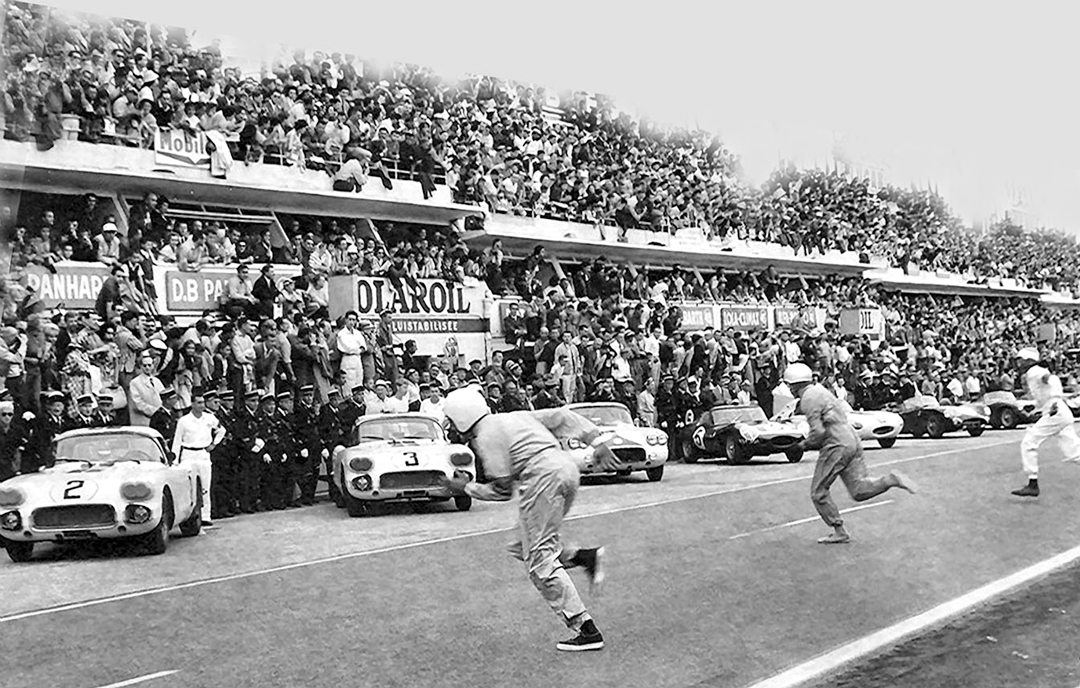
When the B.S. Cunningham Company stopped making cars in 1955, Briggs noted that, “I have stopped trying (to win Le Mans) because I, personally, can’t afford to compete against the biggest manufacturers in Europe.” In addition, the IRS had re-classified the business as a non-deductible hobby.
It’s an interesting side note that Briggs’ only son, Briggs S. Cunningham III, along with Bob Lutz and Larry Black, made a prototype Cunningham C-7, introduced at the 2001 Detroit International Automobile show. None were manufactured for sale.
Briggs Cunningham didn’t confine himself to road racing, In 1958 he won the ultimate sailboat race, America’s Cup. Started in 1871, America’s Cup is a match race between yachts represented by different countries’ yacht clubs. One boat, known as the defender, represents the club being challenged, while another yacht represents the club mounting the challenge. In 1957, England’s Royal Yacht Squadron challenged the New York Yacht Club, winner of the previous race. It held a series of contests among three boats, one of which was Briggs’ “Columbia.” Skippering Columbia, Briggs won the series and went on to defeat the British yacht, the Spectre. Along the way, Briggs invented a device for smoothing sails, called the “Cunningham.” One of his crew remarked that, “Briggs was like a fine violinist with boats.”
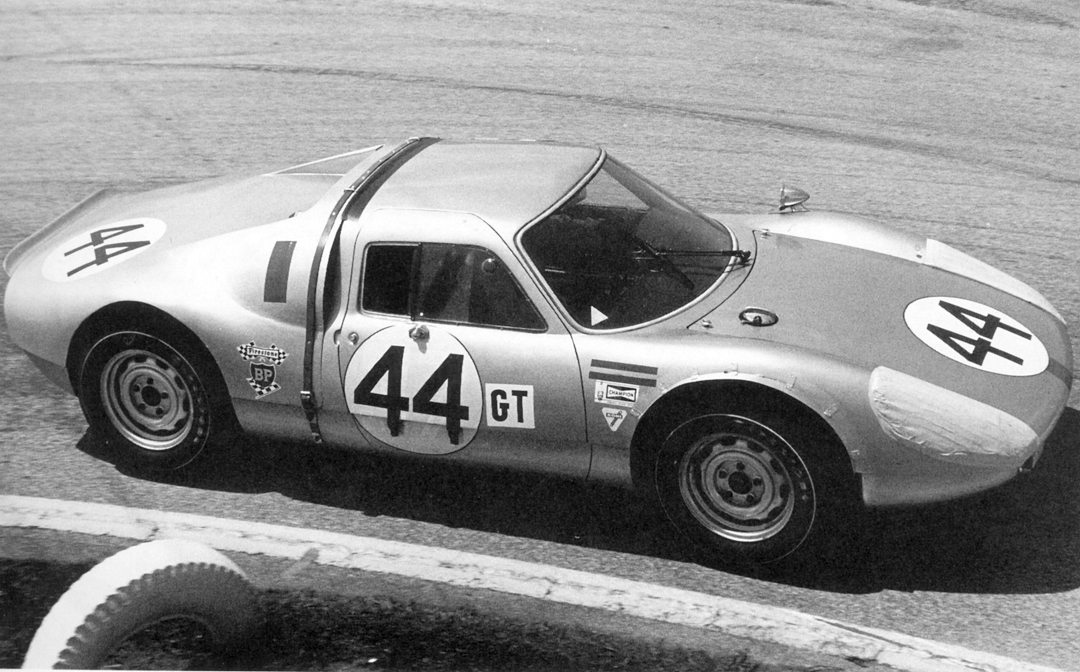
In the early ’60s, Briggs moved to Costa Mesa in Southern California, where he met and married a woman named Laura Maxine Elmer. She had been an active competitor driving other people’s cars in Southern California sports-car ladies’ races where we were acquainted. We called her “Maxine.” Soon after the marriage, I ran across her at a store in Costa Mesa. (At the time, I was teaching at Orange Coast College in Costa Mesa.) I said, “Hi Maxine.” She replied, “Art, my name is Laura!” I guess she thought Laura Cunningham sounded better than Maxine Cunningham.
In 1966, Briggs started to put together a museum to house the many cars he had collected over the years. There was a grand opening the following year. It featured one of the world’s then best collections. In addition to various Cunninghams, there were other cars he had raced: his Bu-Merc, the 166 Ferrari Corsa, the two Le Mans Cadillacs including Le Monstre, and the Porsche 904 from his last drive. Also there was a very rare Bugatti Royale, a 1913 Grand Prix Peugeot, a 1927 Delage, two Hispano-Suizas and, on loan from Gurney, Dan’s famous Formula One Eagle. The 90-car Briggs Cunningham Automotive Museum remained open for the next 20 years. When it closed in 1986, all of Briggs’ cars were sold to Miles Collier Jr. and are now housed in the Collier Automotive Museum in Naples, Florida.
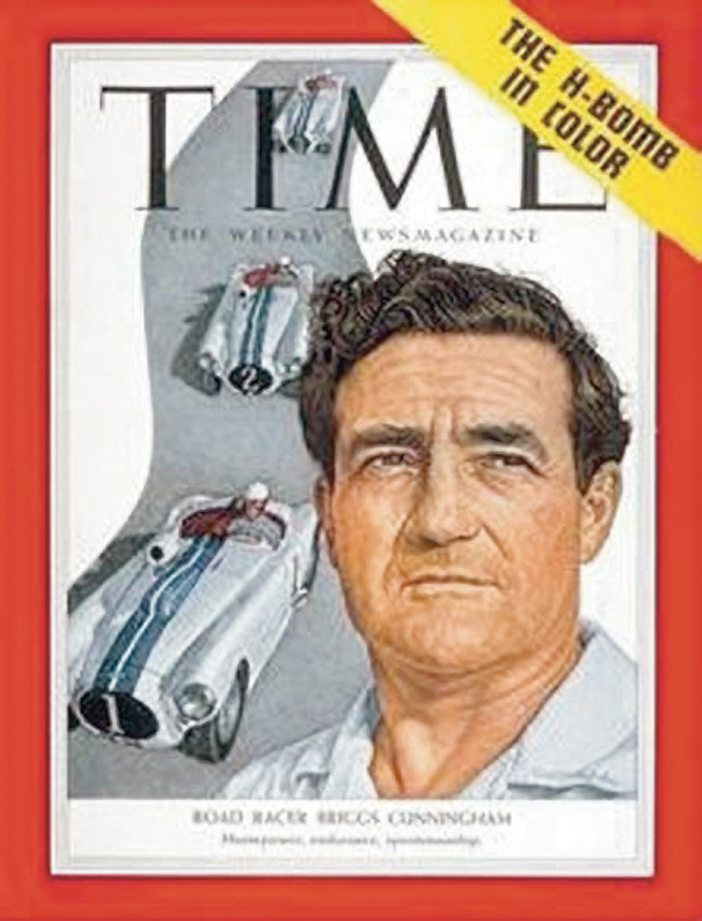
After his museum closed, Briggs and Laura moved to a suburb of San Diego where they bought a large home near the Del Mar racetrack. One day, Skip Hudson and I paid a visit. I was impressed by his library, or rather, two libraries, one for motorsport, the other for sailing. It was on the second floor in a very large room with many bookshelves organized parallel to one another just like a public library. On our way home, we discussed throwing a party to celebrate Briggs’ upcoming 85th birthday. On January 19, 1992, a large group of us gathered at the Cunningham home. Some came from afar, including John Fitch, Augie Pabst and Sherwood Johnston. Phil Hill, Dan Gurney and Carroll Shelby were on hand along with some 50 others.
Some time later, Briggs and Laura moved to Las Vegas. By the turn of the decade, Briggs’ health was failing, confining him to a convalescent home where Laura visited him every day. Briggs died on July 2, 2003, at the age of 96 of complications from Alz-heimer’s Disease. I was honored when Laura asked me to say a few words at his memorial service, held August 8 in Corona del Mar.
Briggs had quite a sense of humor, so I recalled two of his remarks. When asked what yacht racing was like, he said, “It’s like standing in a cold shower while tearing up hundred dollar bills.” And, how do you make a small fortune racing and building cars? “Start out with a large fortune.”
In 1993, Briggs Cunningham was inducted into the America’s Cup Hall of Fame and the Motor Sports Hall of Fame, as well as the International Motorsports Hall of Fame in 2003 and the SCCA Hall of Fame in 2010. A turn at Sebring is named the “Cunningham Corner.” According to an article in the October 2003 Road & Track, “By building and sailing his own ships and building and racing his own cars, Briggs Cunningham epitomized the definition of the American sportsman.”
Thanks are due to Larry Berman who has compiled a very complete and accurate race history, not only of Briggs Cunningham, but also John Fitch.


